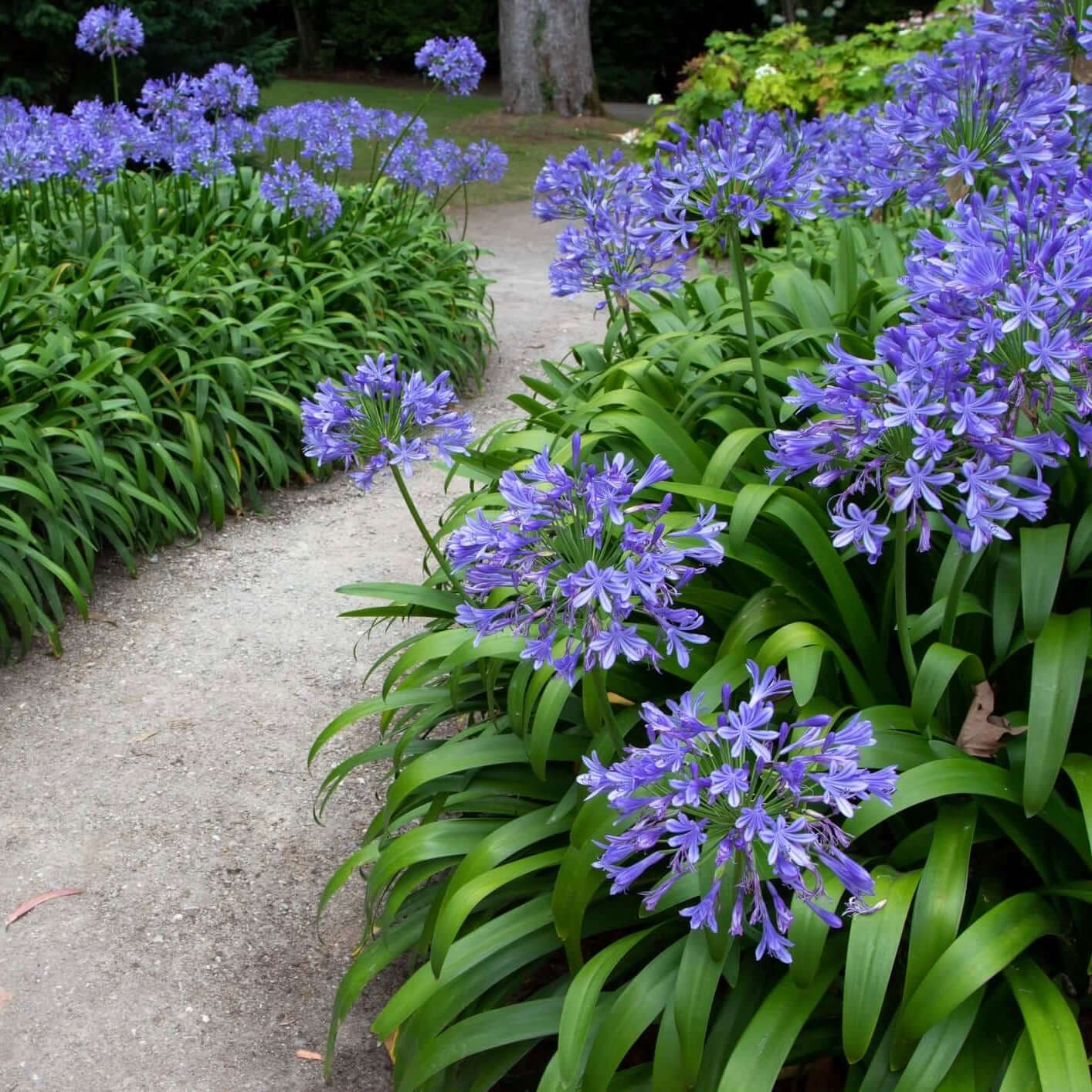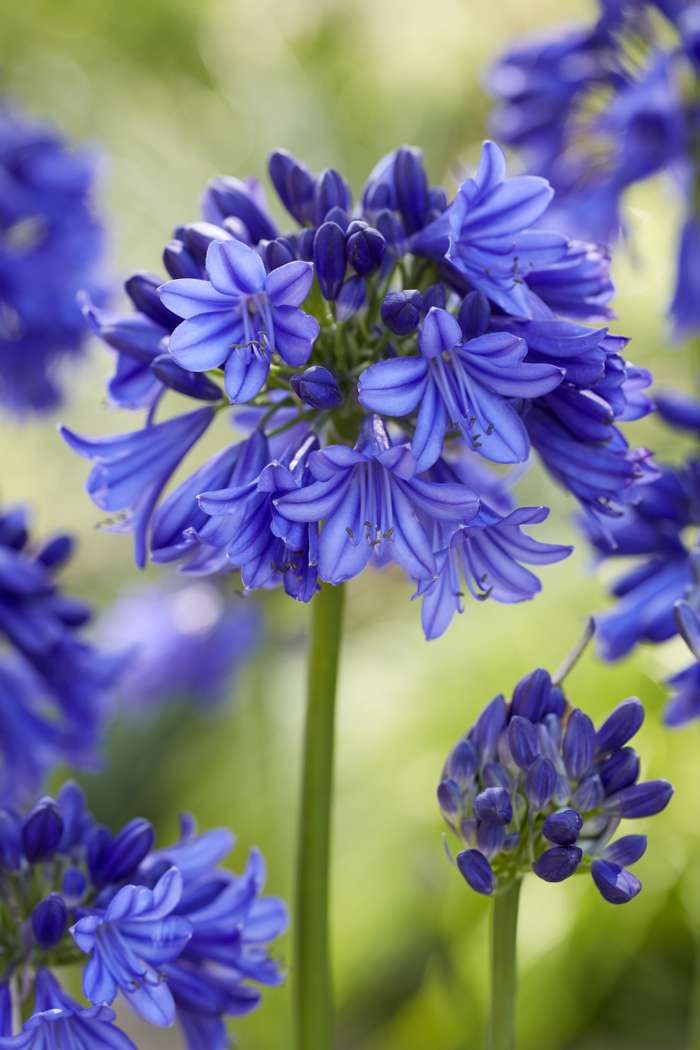Agapanthus Varieties: Choosing the Best for Your Landscape
Agapanthus Varieties: Choosing the Best for Your Landscape
Blog Article
Releasing the Secret to Effective Agapanthus Farming: Advice for a Flourishing Garden
In the realm of horticulture, growing agapanthus effectively calls for a calculated technique that encompasses numerous aspects of plant treatment. With mindful focus to information, one can open the secrets to supporting these magnificent blossoms, bring about a yard that prospers with elegance and vibrancy. By recognizing the nuances of agapanthus farming, one can develop an environment where these plants thrive and bloom perfectly. In the complying with conversation, we will certainly discover crucial suggestions and techniques that will lead you towards a prospering agapanthus yard, providing insights right into ideal methods, dirt conditions, watering methods, and extra.
Growing Agapanthus: Finest Practices
When planting Agapanthus, proper soil preparation is crucial for making sure successful development and advancement of these attractive blossoms. Agapanthus, typically referred to as Lily of the Nile or African lily, thrives in well-draining soil with a slightly acidic to neutral pH level - Agapanthus. Prior to growing, it is critical to amend hefty clay dirts with natural matter such as compost or peat moss to enhance drain and offer important nutrients for the plants
To grow Agapanthus, choose an area that receives complete sunlight to partial color, as this will advertise healthy development and plentiful flowering. Dig an opening twice the size of the plant's root sphere and position the Agapanthus at the exact same deepness it was previously expanding. Delicately backfill the opening with soil, pushing down firmly to eliminate any type of air pockets around the roots.
Water the freshly planted Agapanthus completely and proceed to maintain the soil equally wet, particularly throughout the plant's energetic growing season. Agapanthus. Applying a balanced plant food once a month can better sustain the plant's growth and flowering. By complying with these best methods for growing Agapanthus, you can develop a stunning display of these fascinating flowers in your garden
Suitable Soil Conditions for Agapanthus
For optimal development and growing success of Agapanthus plants, making sure the dirt problems are ideal is crucial. Agapanthus prefers soil that is rich in nutrients, so including a balanced plant food during the growing period can promote healthy and balanced growth and lively flowers.

Watering and Feeding Tips
To ensure healthy and balanced growth and vivid blooms, proper watering and feeding methods are vital for successful Agapanthus farming. Agapanthus plants gain from routine watering, especially during the growing season. It is suggested to water deeply as soon as a week, making sure the dirt is wet yet not waterlogged. moved here During hot weather or in pots, even more frequent watering might be needed to avoid the soil from drying out entirely.
When it concerns feeding Agapanthus, a well balanced fertilizer with equal components nitrogen, phosphorus, and potassium can be applied in the spring to advertise healthy and balanced development and flowering. Slow-release fertilizers are excellent for offering nutrients slowly over a prolonged duration. Prevent over-fertilizing, as this can lead to too much foliage growth at the expense of blossoms.
In addition, incorporating raw material like garden compost into the dirt can enhance nutrient levels and enhance dirt structure, assisting in the general health and wellness of the Agapanthus plants. By complying with these watering and feeding suggestions, gardeners click here for more info can ensure their Agapanthus plants thrive and produce stunning displays of blossoms.
Pruning and Deadheading Strategies
Proper pruning and deadheading techniques play an important role in preserving the health and appearances of Agapanthus plants, complementing the necessary practices of watering and fertilizing for successful growing. Pruning Agapanthus includes eliminating invested flower heads, dead or yellowing leaves, and total shaping of the plant to advertise far better growth. Deadheading, the procedure of eliminating discolored flowers, not only boosts the plant's appearance however additionally encourages additional growing.
When deadheading Agapanthus, it is recommended to trim off the flower stem at the base using sharp, tidy shears. This process reroutes the plant's power from seed production back into root and vegetation development, promoting a much healthier and a lot more durable plant. Routine deadheading can expand the blooming period of Agapanthus and protect against self-seeding, which can lead to congestion.
In terms of pruning, Agapanthus usually gain from a light trim after blooming view it now to clean the plant and encourage fresh growth. Reducing back the invested flower stems and eliminating any type of damaged or dead foliage helps maintain the plant's vigor and overall look. Nevertheless, it is vital to stay clear of reducing right into the crown of the plant, as this can damage its health and wellness.

Protecting Agapanthus From Vermins and Diseases
Applying effective bug and disease management strategies is essential to guarding the health and wellness and vitality of Agapanthus plants in farming. One typical pest that influences Agapanthus is the Agapanthus borer, a caterpillar that passages into the plant, triggering damages to the leaves and blossoms.
In enhancement to pests, Agapanthus are at risk to illness such as root rot and fungal fallen leave places. By remaining attentive and resolving bug and illness problems quickly, gardeners can help their Agapanthus thrive and grow.

Conclusion
Finally, effective growing of agapanthus requires correct growing techniques, excellent soil conditions, sufficient watering and feeding, routine trimming and deadheading, and security from pests and conditions. By complying with these ideas and methods, gardeners can make sure a prospering garden loaded with attractive agapanthus blooms. Agapanthus. Bear in mind to maintain regular care and attention to information to advertise the health and longevity of these magnificent plants
When growing Agapanthus, proper dirt preparation is necessary for guaranteeing effective development and development of these stunning blossoms.Water the freshly planted Agapanthus completely and continue to maintain the soil evenly damp, especially during the plant's active expanding season.For ideal development and blooming success of Agapanthus plants, ensuring the soil conditions are excellent is vital. When planting or hair transplanting Agapanthus, guarantee the dirt is well-prepared to provide the necessary structure for the plants to develop themselves successfully. One typical parasite that affects Agapanthus is the Agapanthus borer, a caterpillar that passages into the plant, triggering damage to the flowers and fallen leaves.
Report this page